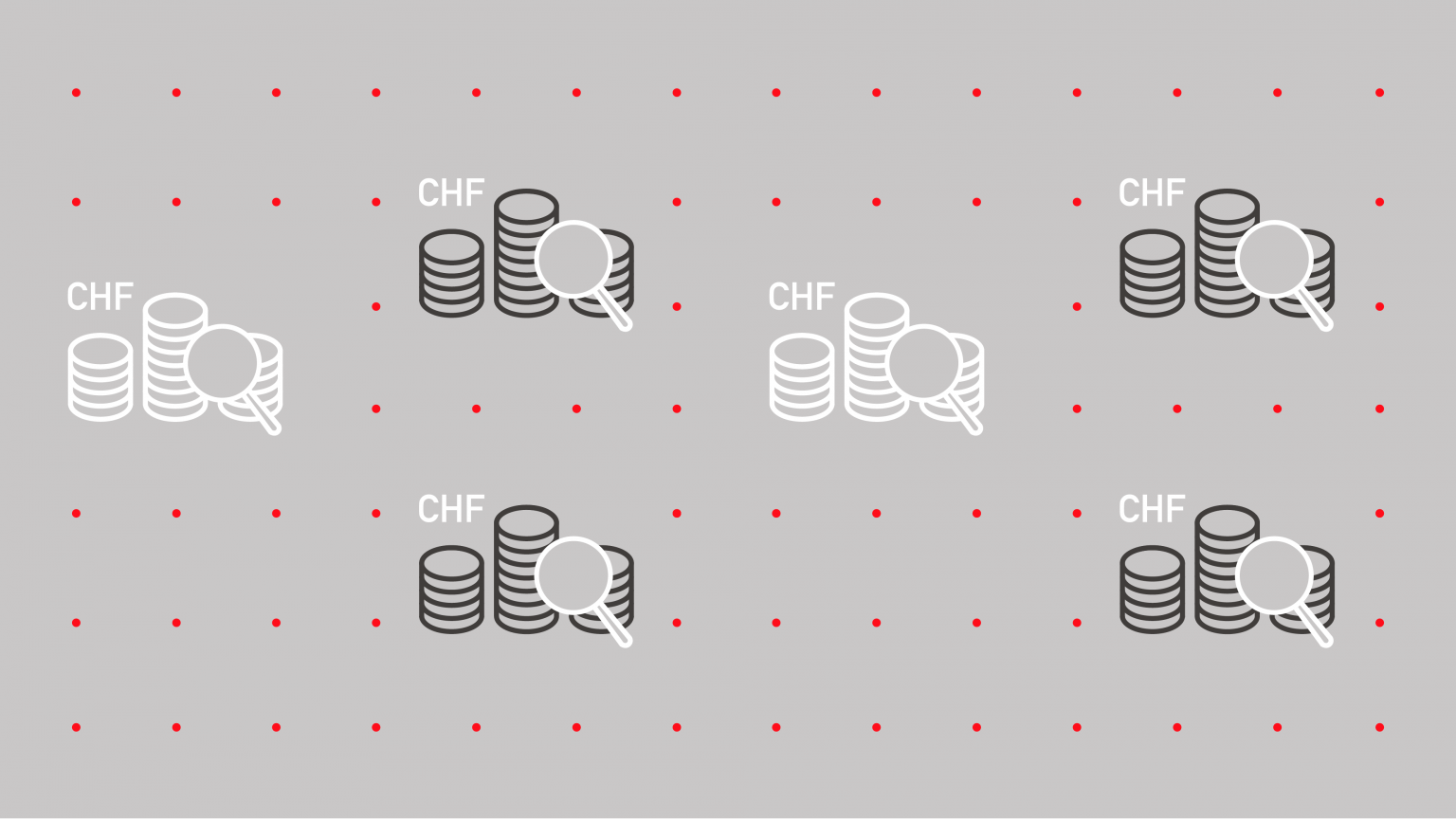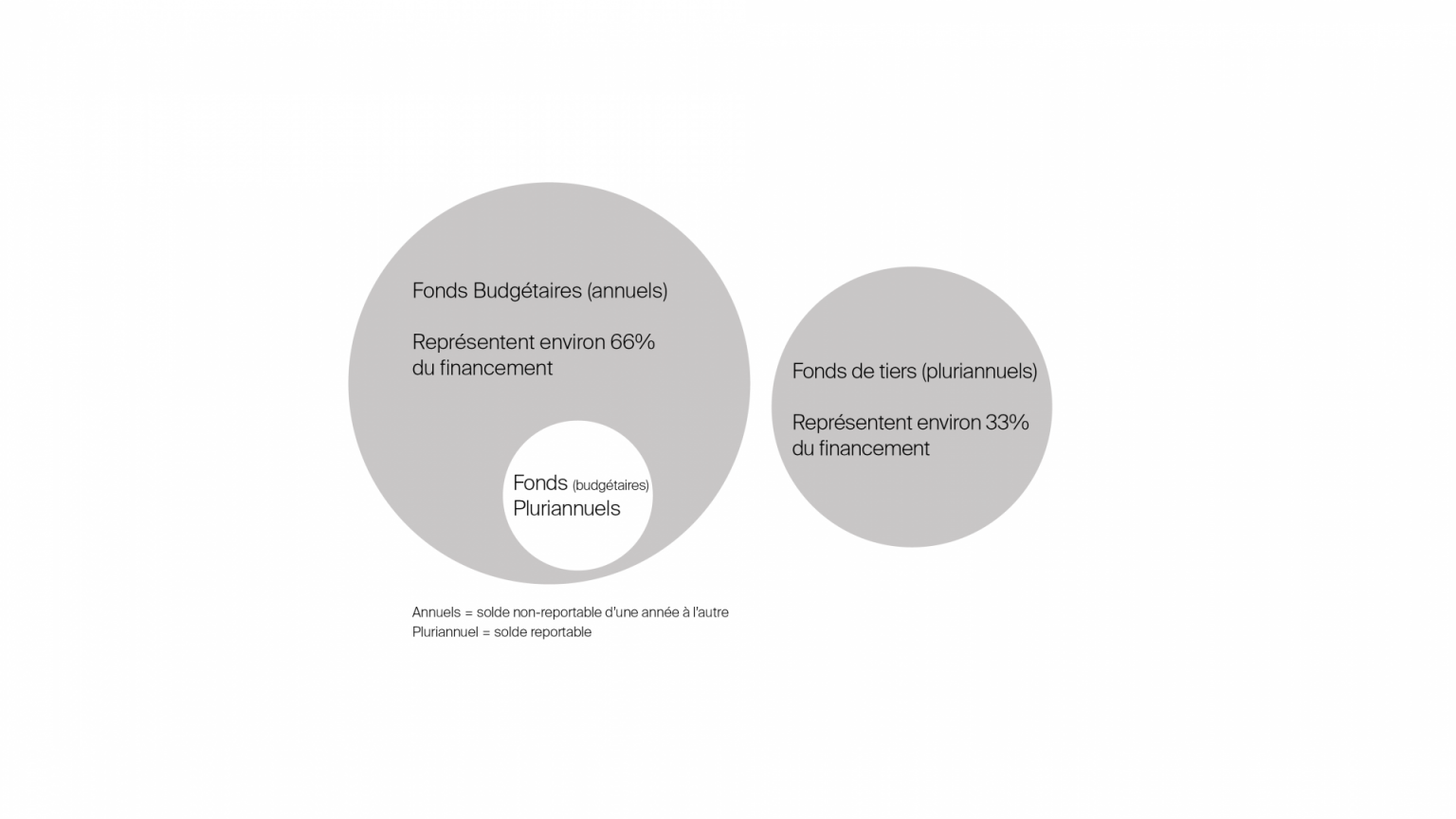Fund Management

.
.
EPFL financial organization
EPFL’s financial structure corresponds to its organizational structure: each component of the School is equivalent to a cost centre.
Funds are attached to each cost centre. These funds are used for accounting entries, reporting and control.
A budgetary account is used for each transaction in order to determine the nature of the revenue and expenditure. Budgetary accounts are structured in a chart of accounts common to all ETHs. In particular, they make it possible to produce the balance sheet and profit and loss account, as well as to analyse the School’s consolidated expenditure by type.

EPFL different type of funds
These funds are used to manage EPFL’s global budget.
The budgetary funds, grouped into “envelopes”, are used to manage the budget allocated by the Swiss Confederation, via the ETH Board.
They are attached to the EPFL’s financial structure and are assigned either directly to the Head of Unit or to the person responsible for the fund.
At the annual closure, the budgetary balance of this type of fund is not carried over to the following year.
Multiannual funds are specific funds created to manage an activity or project for a fixed period of time. They are supplied by the financial contribution of the Confederation, either via the EPFL budget or via the budget of other institutions of the ETH Domain (including CEPF).
The allocation is for a period of 12 months maximum, providing that it comes from the EPFL budget (such funds are called “multiannual” because it can start during the calendar year). Allocations from the other institutions of the ETH Domain may be for longer periods.
The balance of a multiannual fund is carried over from one financial year to another, unlike budgetary funds. At the end date, a positive balance is refunded (transfer to the Direction’s reserve fund) and a negative balance is offset by the Unit’s resources.
A project fund is opened by the Controlling Service on the basis of a contract for an amount of more than CHF 50,000 and a request from the Research Office (research grants), Technology Transfer Office (research contracts) or Philanthropy Services (sponsoring, donation and legacy contracts).
The project fund is used to finance activities, equipment, salaries and other expenses related to a specific research project.
The project fund is closed on the date the contract ends.
Any deficit or surplus on the project fund is offset by the Unit’s reserve fund; however, the Head of Unit must conform to the specific management rules defined in the contract by the funding source, donor or sponsor.
This type of fund is financed by a reserved fund (see below) or by income from research or service contracts of less than CHF 50,000.
Unlike a project fund, which concerns a single contract, a designated fund includes several contracts. It is used to fund the research activities of various projects.
The designated funds are capped at CHF 50,000.00 at the end of the year, with surplus funding transferred to the reserve fund for the Unit concerned.
Any balance from a project fund that has reached its closure date and does not have to be refunded to the funding source is transferred to the Unit’s reserve fund.
A reserve fund is mainly used to finance teaching and research activities, as well as to offset deficits on other funds.
The reserve fund only registers internal transfers relating to overheads and surpluses or overdrafts on other funds. The payment and collection of invoices and the payment of salaries may not be carried out using the reserve fund.
.
Third-party financial contributions
The Swiss National Science Foundation (SNSF) is Switzerland’s leading institution for the promotion of scientific research. Where to send your grants requests? How to manage your subsidies? What are the rules regarding the eligibility of the cost of technology platforms?
With a budget of 79 billion euros, H2020 is the successor to FP7. Find here where to submit an H2020 project, how audits on this type of fund work and who to contact if you have any questions or problems.
The Swiss Innovation Agency supports innovative projects that would not be possible without funding or that do not exploit their commercial potential. Fund management, financial reporting, and contacts: you will find in this section the information you need.
Founded in 1999, Oncosuisse (the Swiss Union against Cancer) brings together seven Swiss organizations dedicated to the fight against cancer. It relies on subsidiarity to achieve its objectives. Requests for support, fund management or financial reporting: consult this page to learn more about it.
Other third-party financial contributions include commercial enterprises as well as non-profit entities. Financial report, contact information: find here the necessary information.
.
.
EPFL laboratories and external users have access to various services provided by EPFL infrastructures (commonly known as “technological platforms”). Since 1 January 2019, the Swiss National Science Foundation (SNSF) has published new rules on the eligibility of their costs.
Useful Links (FR)
Here are the forms, to be completed and returned to the Controlling Department, for the operations mentioned above:
- Demande de transfert de réel
- Demande de transfert de budget
- Ouverture de fonds (DOC)
- Correction d’écriture
You will find more information about entries corrections in this knowledge article (FR). The Financial Regulation (LEX 5.1.1) sets out how these operations are to be used.
.
Contact
For all questions concerning the preparation of the applications: [email protected]
For questions concerning financial management:
Budgetary and multiannual funds:
| Séverine Jaques | [email protected] | |
| Fabrice Favre | [email protected] | |
| Maxime Flury | [email protected] | |
| Amandine Missiliez | [email protected] | |
Third-party funds:
| FNS | Giuseppa Mandra | [email protected] |
| Steven Miller | [email protected] | |
| FP7/H2020 | Luc Tinguely | [email protected] |
| Nicolas Hausheer | [email protected] | |
| Patrizia Angelucci | [email protected] | |
| Steven Miller | [email protected] | |
| InnoSuisse | Luc Tinguely | [email protected] |
| Swiss Cancer League | Luc Tinguely | [email protected] |
| Business contracts | Georges Machlout | [email protected] |
| Other third-party funds | Ana Silva | [email protected] |
Platforms costs:
| Séverine Jaques | [email protected] | |
| Amandine Missiliez | [email protected] | |
| Maxime Flury | [email protected] |
.
.